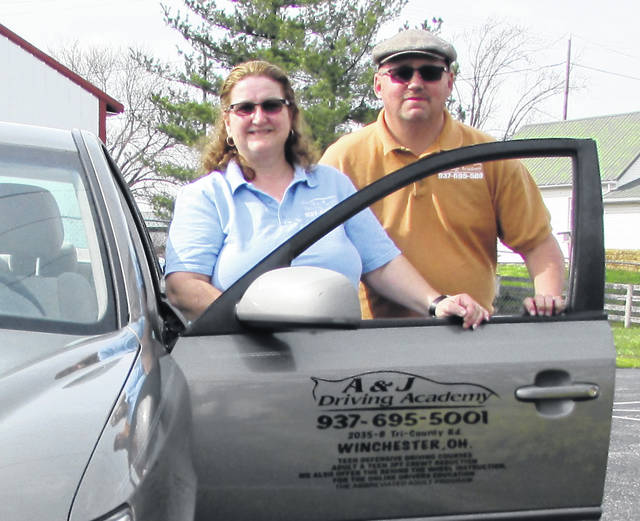
The National Safety Council has designated April as Distracted Driving Awareness Month, and though the face of driver education has changed in recent years, one thing that hasn’t is the problem of what is now called distracted driving. Angie Luti, the owner of A & J Driving Academy in Winchester told The Times-Gazette that parents are now having to shoulder some of the blame.
“Most of the kids are telling me that they’ve seen their parent’s text and drive all the time,” she said. “I hear this both when I’m in the car with them and when they’re in the classroom, and a lot of their attitude is ‘I can text and drive and I won’t be in a wreck because I’m more careful, so it won’t happen to me.’”
Luti is a 13-year veteran of driver education with instructor credentials, and can speak from experience of the problem of distracted driving since she was hit head-on by a teen driver who was on her phone at the time of the collision three years ago.
“I lost five months of work because of that crash,” she said. “I’m also a school bus driver and I had just dropped off my last student and was going about 35 miles per hour when she came around a curve doing about 75 and hit me head on.”
Luti said the driver impacted the “dead center of my bus” and went airborne twice before coming to rest, and the entire sequence of events was captured on video in real time.
“We both suffered traumatic brain injury, but she was Air-Cared and ended up with the whole right side of her body being crushed,” she said. “Lots of internal injuries, a crushed pelvis, collapsed lungs due to broken ribs, she was in bad shape.”
She said she still deals with post-traumatic stress disorder on a daily basis and has nightmares of seeing the other driver trapped in the mangled remains of her car.
According to DriversEd.com in its recently released “2019 Distracted Driving and Social Media Report,” 55 percent of surveyed participants admitted to checking social media while behind the wheel, 26 percent admitted to watching videos and another 25 percent said they’ve recorded a video while driving.
Laura Adams is the safety and education analyst for DriversEd.com, and said that while the survey results are startling, as Luti stated, it isn’t limited to just teens.
“I wish I could say the solution is as simple as parents talking to the teen drivers about the dangers of distracted driving,” she said. “But the parents are also the ones checking their Facebook posts, watching YouTube videos and recording on Instagram.”
She said a few years ago it was only texting and driving, but today it’s an ever growing distracted driving crisis with potentially deadly consequences.
Luti said her daughter has an app on her phone that will automatically go to voice mail when activated and has been effective when it’s used, but the one time she chose not to use it proved expensive.
“She picked up her phone to call me after school and then took out a sharp curve chevron sign on U.S. 62,” she said. “She uses it all the time now, after $3,000 damage to her car that she had to pay for.”
Luti said her daughter has never seen her text and drive since she refuses to do it, but Adams said the problem today stems from what children have seen their parents doing while driving, and in turn consider it to be normal behavior.
“If parents are eating while driving, putting on make-up and on their phones texting or using social media, kids are going to think that it’s OK,” she said. “Parents and caregivers have got to be role models because kids are watching.”
The average driver who takes their eyes off the road for about five seconds when using their smartphone will have traveled the length of a football field at 55 mph, but she said the most dangerous place to be a distracted driver is at an intersection.
There are a lot of vehicles coming at each other from right angles, she said, with drivers that may or may not be paying attention, pedestrians crossing and people on bicycles, and it’s one of the most important areas to not be using the phone when behind the wheel.
With all the information, knowledge and statistics that deal with the dangers of distracted driving, Adams said she thinks the reason the problem still persists is an “addiction” that people have for their phones.
“I think we really have a hard time putting them down when we get in the car,” she said. “I would encourage drivers to put the phone in the glove box, or in the back seat or just mute it, because you’re likely to be tempted to pick it up it’s in plain sight.”
Luti’s advice is simple. It comes from someone who teaches it both in the classroom and in the car, and as a survivor of a distracted driver-caused crash.
“Put the phone down,” she said. “Whatever it is, it can wait.”
Reach Tim Colliver at 937-402-2571.


